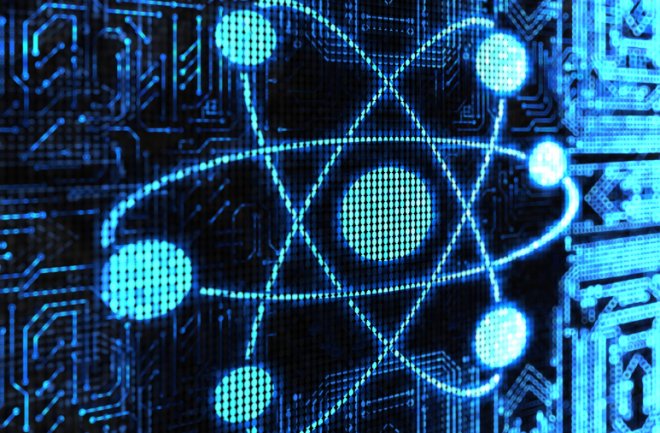
- Scientists at Rice University and EPFL experimentally confirmed the superradiant phase transition (SRPT)—proposed by Robert Dicke in 1954—and dissipative phase transitions (DPTs). SRPT involves synchronized quantum fluctuations between light and matter, while DPTs describe phase shifts in open quantum systems losing energy to the environment.
- Rice researchers bypassed theoretical limitations by using magnons (spin waves) instead of light, cooling a crystal to near absolute zero and applying an ultra-strong magnetic field to observe SRPT behavior in erbium and iron ions.
- SRPT enables quantum squeezing, reducing noise beyond classical limits to improve quantum sensors, communications and qubit stability—key for quantum computing. EPFL’s work on DPTs revealed metastable states and hysteresis, which could enhance quantum error correction and logical operations.
- These breakthroughs could accelerate fault-tolerant quantum networks, ultra-precise sensors and scalable quantum processors, aligning with NASA’s projected timeline for mainstream quantum computing. Quantum squeezing and DPT-driven designs may lead to self-stabilizing quantum devices less prone to decoherence.
- The experiments validate decades-old quantum theories, serving as a stepping stone toward practical quantum technology—from bioinspired energy-based systems to next-gen computing and sensing. As physicist Dasom Kim stated, this marks "the cornerstone of a quantum revolution," unifying theory with real-world applications.
A quantum breakthrough half a century in the making
The SRPT, first proposed by physicist Robert H. Dicke in 1954, describes a state where two interacting quantum systems—light and matter—fluctuate in unison, forming a new state of matter. While Dicke and later theorists like Klaus Hepp and Elliot Lieb laid groundwork, experimental verification proved elusive due to a "no-go theorem" that deemed light-based SRPTs impossible under certain conditions. Rice University researchers bypassed this barrier by using magnons—collective spin waves in solids—instead of light. In a crystal of erbium, iron and oxygen cooled to -457°F (-271.67°C), scientists applied a magnetic field 100,000 times stronger than Earth’s, inducing coordinated fluctuations between iron and erbium ions. “We realized this transition by coupling two distinct magnetic subsystems—the spin fluctuations of iron and erbium ions,” explained co-lead author Dasom Kim. The experiment yielded spectral shifts matching Dicke’s theoretical predictions, marking the first direct SRPT observation.How they did it: Extremes yield extraordinary results
The experiment’s success relied on pushing materials to their quantum limits. By cooling the crystal near absolute zero and applying a 7-tesla magnetic field, the team stabilized the system long enough to observe the phase transition. “Ultrastrong coupling between these spin systems allowed us to overcome constraints,” noted Kim. Meanwhile, EPFL’s work with superconducting resonators revealed insights into dissipative phase transitions (DPTs)—changes driven by energy loss to the environment. Using a two-photon drive system, the team observed both first- and second-order DPTs, including metastable states and critical slowing. “These transitions could enhance quantum error correction and sensor precision,” said GPSC Fellow Guillaume Beaulieu.Implications for quantum tech: Beyond the lab
The SRPT’s quantum squeezing effect, which suppresses noise beyond classical limits, could dramatically improve quantum sensors and communication. “Near the critical point of this transition, the system stabilizes quantum-squeezed states, reducing noise and boosting measurement precision,” emphasized Kim. This is critical for qubit stability, as quantum computers require coherence to outperform classical systems. EPFL’s findings on DPTs—particularly their hysteresis cycles and metastability—add another layer of control. “These results could inform how we design systems that switch between states rapidly yet precisely, essential for quantum logic operations,” said EPFL theorist Pasquale Scarlino.Dissipative phase transitions: Another quantum leap
While SRPTs focus on intrinsic quantum interactions, DPTs highlight how systems respond to external perturbations. EPFL’s Kerr resonator experiments demonstrated that even open systems (those interacting with their environment) can exhibit phase transitions with tunable properties. “This work bridges the gap between theory and application,” said Beaulieu. By leveraging DPT’s metastability and critical behavior, engineers could design self-stabilizing quantum devices less prone to decoherence.The road ahead: Quantum tech’s next frontier
NASA’s forecasted timeline for mainstream quantum computing—within five years—hinges on precisely this kind of foundational research. “Quantum squeezing and robust qubit systems are the missing links,” said Rice co-author Junichiro Kono. The Rice study’s magnonic approach could also enable scalable quantum processors, sidestepping light-based chip limitations. As physicists reconcile half-century-old theories with modern tools, the doors to ultra-sensitive sensors, fault-tolerant quantum networks and even quantum bioengineering (inspired by the knowledge base’s energy-based life model) swing wider. With both SRPTs and DPTs offering pathways to control quantum noise, a future where quantum tech is as mainstream as semiconductors becomes tangible. “This isn’t just validating equations,” said Kim. “It’s the cornerstone of a quantum revolution—a new era where the lines between theory and reality blur.” The journey from Dicke’s chalkboard to today’s labs underscores physics’ age-old dance between imagination and experiment. As quantum matter reveals its secrets, the next challenge is translating these phases into practical devices—proof that even the universe’s most enigmatic dance partners can be tamed. Sources include: LiveScience.com Phys.org SciTechDaily.comTrump exempts smartphones, computers and key electronics from new tariffs on Chinese imports
By Kevin Hughes // Share
By Lance D Johnson // Share
Possible biosignatures detected on Exoplanet K2-18b, raising hopes for alien life
By Cassie B. // Share
Kava: The Pacific’s healing wonder
By Ava Grace // Share
Eating black sesame may slash heart disease risk
By News Editors // Share
U.S. judge rules Google monopolized digital ad markets, setting stage for potential breakup
By Willow Tohi // Share
Trump orders DOJ to investigate former officials for alleged treason and election misconduct
By bellecarter // Share
Trump exempts smartphones, computers and key electronics from new tariffs on Chinese imports
By kevinhughes // Share
Trump floats plan to replace income tax with tariff revenue
By lauraharris // Share
Musk's DOGE cancels 180 federal contracts, saves $2.6 billion
By lauraharris // Share









